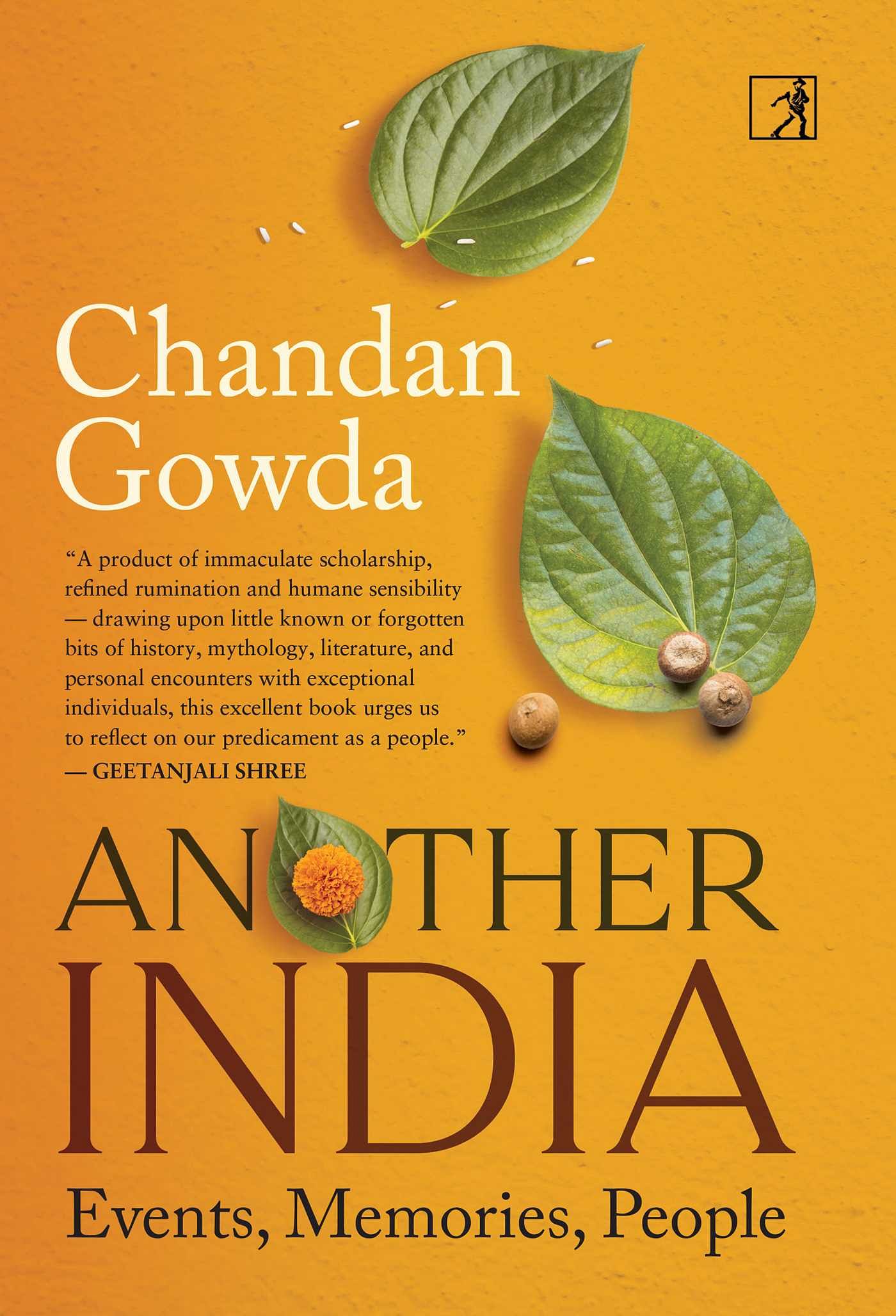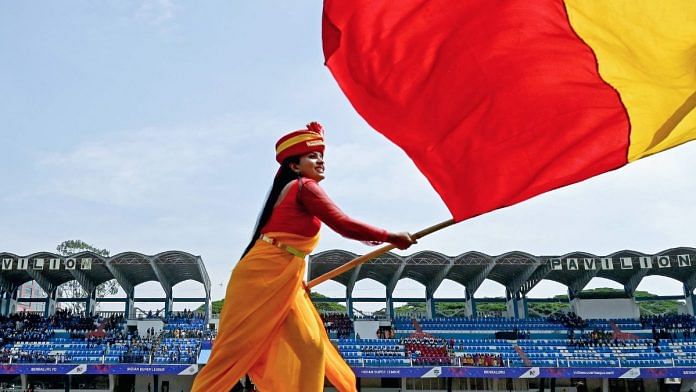It is impossible to miss the large, floor-to-ceiling close-up shots of coy Indian brides and grooms on the restroom corridor walls at the New Delhi airport. Couples in Bengali, Kashmiri, Maharashtrian, Malayali, Punjabi and Tamil wedding finery are paired across the wall shared by the restrooms for men and women. Unsurprisingly, the Kannadigas have gone missing in this cute visual scheme of federal unity. In the national imagination, there are few images, sounds or smells that help create a recognizable presence for them.
Telecast ad infinitum on Doordarshan in the late 80s, Mile Sur Mera Tumhara, the national unity song, affords another instance. The video strove to bring an authentic fit between the regional landscape, dress and personalities and the various Indian languages found in the song’s lyrics. Wearing a saree in the Gujarati-style, Mallika Sarabhai sings a line in Gujarati, and actress Revathi is draped in a Kanjeevaram saree while being all ears to Balamuralikrishna singing a Tamil devotional song.
A couple in traditional Coorgi attire lend visual support to the Kannada line in the song. In the absence of a nationally recognizable Kannada dress, the video director settled for a Coorgi symbol since Coorg is inside Karnataka. The irony is that the Coorgis have their own language, with many of them not seeing themselves as Kannadigas.
While locally specific dresses exist across Karnataka, no single attire has come to be ethnicized as uniquely Kannadiga either inside or outside the state. The same goes for food. Udupi and Kamat restaurants will serve vegetarian food from southern Karnataka, places like Swagath in Delhi non-vegetarian fare from coastal Mangalore. But what one might call Karnataka cuisine does not exist the way a state cuisine does for Bengal, Kerala or Punjab.
The unavailability of a codified image of how a Kannadiga speaks or acts will pose difficulties for any intrepid film director hoping to use a Kannadiga as the stock south Indian figure. How does one show a Kannadiga in Hindi or even Tamil and Telugu films? The missing resources for generic self-expression find positive summation in the Karnataka state tourism department’s motto: ‘One State, Many Worlds’.
Durable associations with Karnataka do of course exist outside: the pleasant climate and the hip IT sector of Bangalore, cricket stars like GR Vishwanath and Rahul Dravid, music legends like Kumar Gandharva, Gangubai Hangal and Mallikarjun Mansur and, in intellectual circles, figures like M.N. Srinivas, U.R. Ananthamurthy and Girish Karnad. Standard views about what Kannadigas are like as a people though do not exist. There is no sense of a Kannadiga student, for instance, on campuses at JNU, the IITs and the IIMs.
Consider a few images: the enterprising Malayali with the great survival instinct; the Bengali who is tenacious about his language; the fun-loving, ostentatious Punjabi. These views are of course gross caricatures and will run up against exceptions all the time. But the stereotypes exist and their absence in the case of Kannadigas—as well as numerous other communities in the country—is real. Community stereotypes thrive through jokes, gossip and anecdotes. Colloquial descriptive labels give them anchor: Mallus, Bongs, Gultis, and Gujjus, to name a few, all evoking confident certitudes about those communities. Stereotypes of communities will more likely emerge when their styles of being and doing get noticed and talked about in ways that add up and cohere in the minds of others. While these encounters can be social, or even simply textual, where people have views of others without ever having met them, what is clear is a community has to invite enough attention towards itself to generate standard impressions.
Historically, the Kannada speakers have not moved out much; and, the ones who did have not aided in the creation of generic impressions about themselves. When the Udupi restaurants in Bombay faced violence from a nascent Shiv Sena in the 1960s, the latter thought they were attacking South Indians and Madrasis, and not Kannadigas.
While stereotypes justly set off alarm for their potential for stoking wicked fun, harm and even death, the lack of it presents a peculiar predicament. Being a vague, inchoate presence in a system of federated stereotypes can summon unease and a sense of failure. While anonymity can be a source of pleasure and freedom, invisibility conveys a lack of power for those who wish to mark their presence in India’s repertoire of sub-regional images. The non-arrival of a generic Kannada identity is also a triumph of its heterogeneous nature. None of Karnataka’s chief cultural zones, that is, the old Mysore region, coastal Karnataka, Coorg, Mumbai-Karnataka, and Hyderabad-Karnataka, has been able to stand in for the Kannada community image. Amidst the unpredictable twists in a fast-transforming India, a Kannadiga stereotype might yet emerge. At the moment, however, being an amorphous presence in the national imagination should mean a delicious freedom.
 This excerpt from Chandan Gowda’s ‘Another India: Events, Memories, People’, has been published with permission from Simon & Schuster India.
This excerpt from Chandan Gowda’s ‘Another India: Events, Memories, People’, has been published with permission from Simon & Schuster India.



